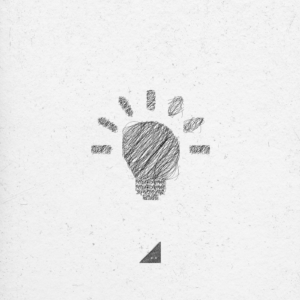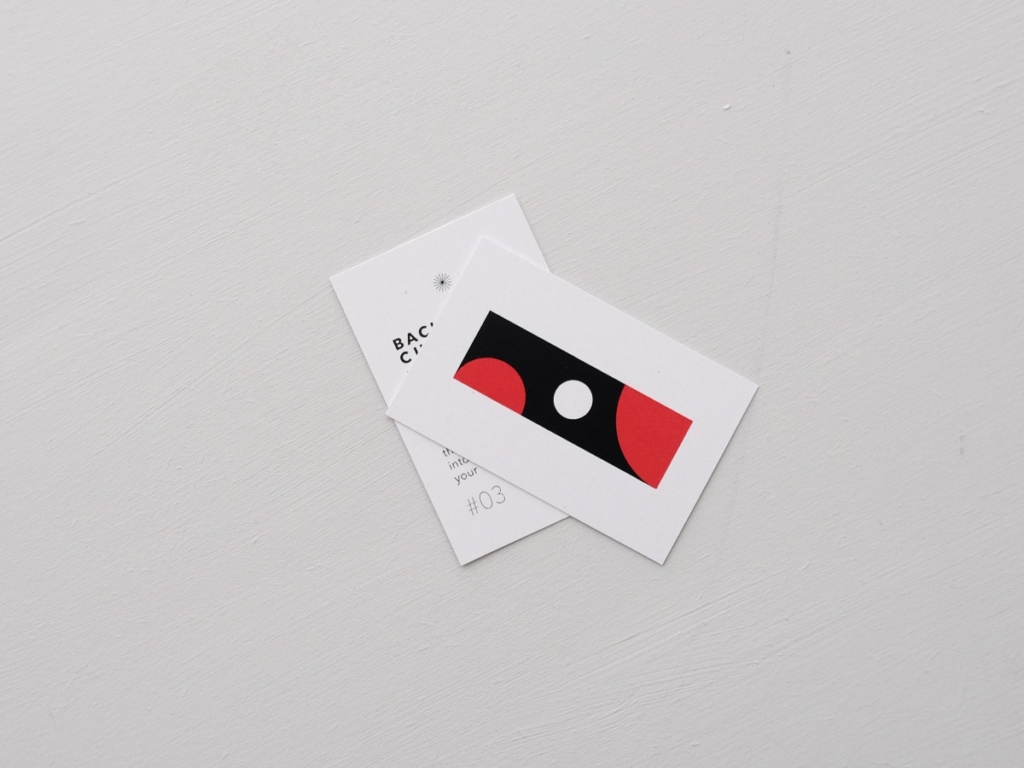III: ideation engines
tools for when you’re stuck but still want to create.
written by still fades

There are days when the ideas don’t arrive.
Not because you’ve got nothing to say – but because there’s too much noise, too much pressure, or just too many directions to go.
When myself and others are making sound content for SoundGhost, ideas don’t just come out of thin air, it goes through a long process of ‘what should we say?’ and ‘what will it sound like?’
If we apply the same processes to music, it can make life easier.
Of course, sometimes we sit down and it all comes out naturally. A song can come out of nowhere in an instant.
But let’s be honest here – those moments can’t be relied upon as they can be rare. I’ve found that if I chase those moments, I set myself up to fail. If you have those moments regularly, then maybe this post isn’t for you.
However, I find if I wrap myself around a theme, concept, constraint or sentence, it makes the process easier. Put yourself on a path to those inspiring moments – don’t chase them aimlessly.
This post isn’t about waiting for inspiration. It’s about using simple idea engines that help you find it again.
Quiet engines to spur you on.
Repeatable processes.
Simple ways to create motion when things feel still.
Here are a few of mine. Maybe some of them will be yours too.
1. Borrow the Emotion, Not the Notes
“Play over a song you love. Then mute it. See what’s left.”
Open a song that moves you – something that makes your chest tighten a little or that you know inspires you.
Play an instrument while it’s running in the background. Not to copy it, but to interact with it.
Try to trace its energy, follow its dynamics, respond in feeling – don’t copy notes. Imagine the artist has commissioned you to add a new part to their track. What would you create?
Then when you have something, mute the track.
Play your part back solo.
You might find something surprising. A phrase, a rhythm, a chord movement that came from your hands, spurred on by your inspiration.
Use it for something new.
2. Mess Blocks (Or: Time to Engage Music Without Purpose)
“You’re not building a track. You’re just playing with sound.”
I call these Mess Blocks because, honestly – that’s what they are.
It’s 30 minutes (or whatever you prefer) to just mess around musically.
A block of time that says no to every pressure you might feel.
No productivity guilt. No need to finish anything.
Block out the noise. Just let yourself play.
Pick up an instrument. Design a noise. Create a loop.
You’re not aiming for a result – you’re just listening and reacting.
And here’s the quiet magic: when there’s no pressure, your instincts show up.
You might stumble on a new loop or feeling – or you might not.
But either way, you said yes to creativity – and no to expectation.
That’s the point of Mess Blocks – they’re a way to give yourself a break, musically and mentally. A window of freedom with no pressure to produce.
But like anything, they work best when used with intention.
If every session turns into a Mess Block, it can become avoidance rather than exploration.
I really recommend setting a timer – your phone is fine. It helps mark the space.
When I set one, my brain knows: this is time to roam.
If I don’t, I sometimes slip into procrastination disguised as “creative freedom.”
Mess Blocks are meant to be unfocused, but they should still orbit music.
Not scrolling. Not mindless distraction. Just honest wandering.
And if you do find yourself procrastinating instead of playing?
Maybe it’s not time for a Mess Block – maybe you just need a real break. (That’s okay too).
3. Make the Texture First
“Design a sound first. Then let the sound tell you what to write.”
We usually start with an idea, then go searching for the right sound to express it. Or we’ll go moving between endless presets to find the right sound.
But what if you reversed that?
Start with sound design. Make a sound that feels rich or broken or ghostly. Make something you want to hear.
Don’t think about structure. Just create a drone, a pad, a warbled synth line. Something new and yours.
Don’t feel confident enough? Just open a random preset and make it yours.
Then write around it.
Let the sound be the idea.
Sometimes tone tells a story better than melody ever could.
4. Change the Instrument, Keep the Idea
“Take something familiar. Give it a new skin.”
Take a phrase you’ve already written – a melody, a chord loop, a rhythm – and move it to a completely different instrument.
That ambient guitar line? Try it on a dusty piano sound.
That granular pad? Take the MIDI and cycle through a different synths presets while it’s playing.
That soft melody? Replace it with a field recording that mimics its shape – crafting a new rhythmical piece. Texturize is great for this.
You’re not rewriting – just translating. And sometimes translation reveals more than the original.
5. Give Yourself a Rule
“Use 3 sounds. Or only 1 plugin. Or a time limit. See what happens.”
Constraints are uncomfortable – and that’s exactly why they work.
Pick one or many:
- 5-minute time limit
- Only use one synth
- No effects
- 3 tracks max
- Write standing up
It doesn’t matter what the rules are. It matters that you stop yourself from overthinking and just start making. You can even try these alongside the Mess Blocks I mentioned earlier – for example, you could say ‘30 minutes to mess around using only one synth’. Or you can be hyper-focused – it’s up to you and how you feel in the moment.
My first album for my still fades project (link) was built entirely from one constraint: I could only spend 1 day working on a song. I’d come up with an idea in the morning, record it in the afternoon and then finish it. I focused the whole album on that concept.
Rules and limitations can be empowering when used creatively.
6. Describe First, Compose Later
“Make music that sounds like a sentence.”
Before you touch a note, write a sentence about what you want a track to feel like.
“A song that sounds like walking home under street lights.”
“A synth loop for a dystopian city.”
“Music that sounds like waking up early on a summers day.”
Then build the sounds to match that feel.
Use language as your starting point. Then imagine you’re painting with tone, not notes.
7. Replanting Old Ideas
“Open an old project. Salvage the part that still feels alive.”
Not every old track is worth fixing. But many are worth harvesting.
Open a half-finished or unreleased session. Don’t fix it. Just listen.
Find the bars or sections that still move you – even if it’s just a subtle noise or chord transition.
Start a new project. Drop that piece in. Build something else around it.
You’re not reviving the old idea. You’re replanting it in new soil.
8. Silence Everything. Reimagine With One Sound.
“Sometimes one honest sound is enough.”
This is similar to the above, but for when we get stuck on a track. Imagine you love what you’ve got so far, but are unable to move on. We’ve all been there. Endlessly looping the last part of the track but unsure what comes next.
Sometimes the best ideas come from stripping everything away but the core piece you love.
Start with a single sound you love in that track – a pad, a synth, a foley texture.
Copy and paste your favourite part of it onto a later part of the session in your DAW – give it plenty of space so you can create around it. Listen to the loop/phrase on repeat for five minutes. Give your mind time to settle into the space. Forget what came before.
Then start to ask questions:
What belongs with this sound?
And more importantly:
What doesn’t?
See what comes out of it. You could come up with an entirely new song, or new part of your track. Either way, you’re moving forward.
9. Reverse the Emotion
“Write a happy version of a sad track – or the other way around.”
Take a piece you’ve already made or even just a loop or memory of one – and flip its emotional core.
If it was brooding and minor, try brightening it up.
If it was dreamy, try making it gritty.
Same tempo, same structure – completely different colour.
You’re not changing the idea – you’re revealing another emotional layer underneath it.
One emotional trick I sometimes use to try to freshen up an idea – export the track, add it to a new session and pitch it down or up in semi-tones to change the key.
It’ll sound fresh and have a new emotional core. It might make you think about the track differently.
10. Trade Roles With Yourself
“Be your own remixer.”
Take a track you made. Export a bounce.
Now, open a new session and pretend it’s someone else’s work.
Imagine you’ve just been asked to remix it.
What would you sample? Cut? Warp? Ignore?
By changing your role, you shift your perspective.
You’re no longer the creator. You’re a collaborator – even if it’s just with your past self.
Final Thought:
Creativity doesn’t always begin with inspiration.
Sometimes it begins with friction. With tools. With repetition.
These little ideation engines aren’t rules – they’re levers. Switches. Routines that make space for something real to show up.
When it does, follow it.
When it doesn’t, you still made something.
And maybe that’s enough.
Bonus Sparks
If you’ve picked up a SoundGhost cassette tape, you might’ve found a small card tucked inside:

Those are Spark Cards – little creative prompts designed to help you move again when you’re stuck. They’re quiet nudges, not instructions. They’re written in mind for all creative roles – not just music.
They’re just another kind of ideation engine – a simple way to shift your perspective and start something new.
You don’t need many tools.
Just the right one at the right time.

